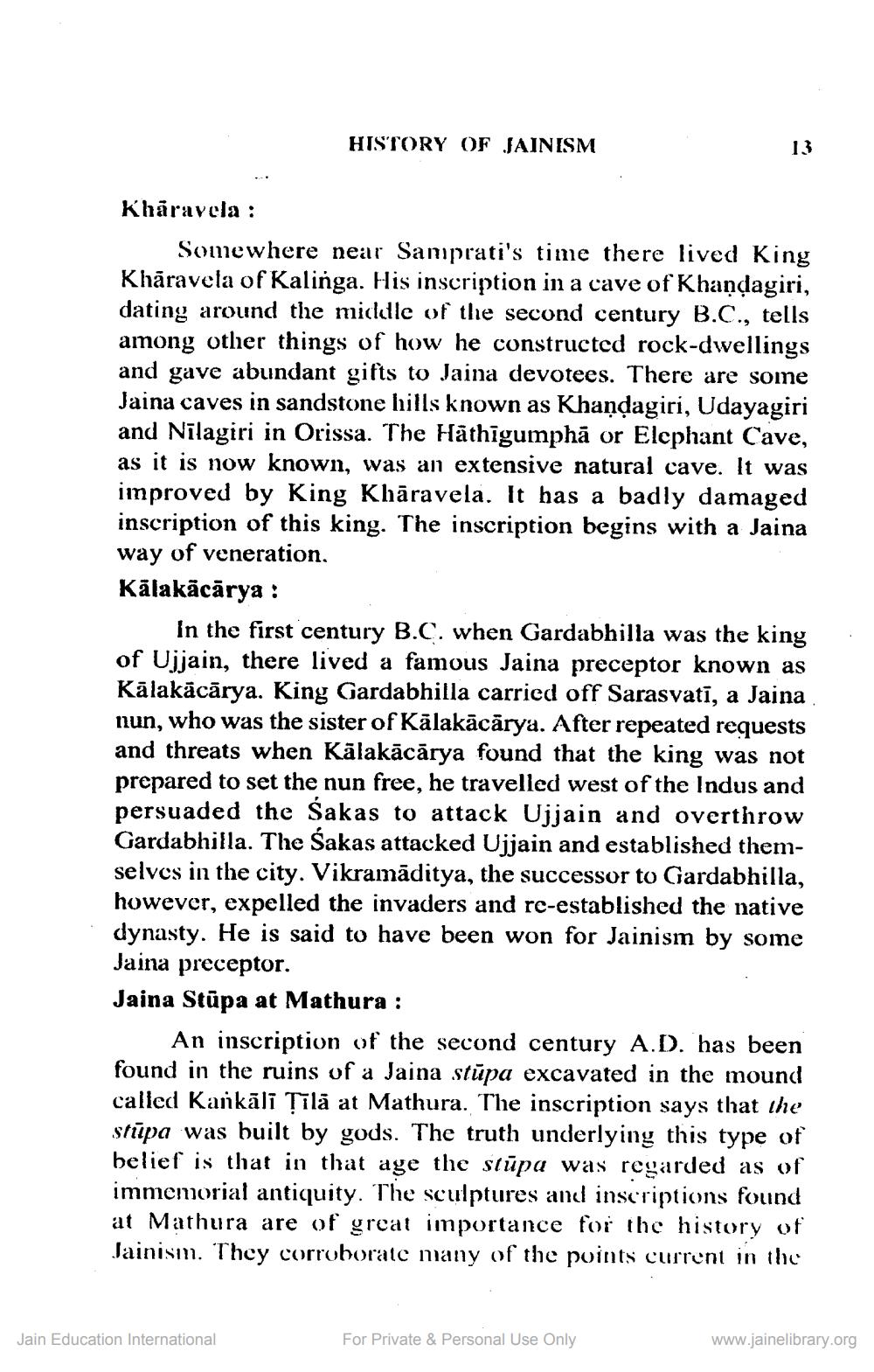________________
Kharavela:
HISTORY OF JAINISM
Somewhere near Samprati's time there lived King Khāravela of Kalinga. His inscription in a cave of Khandagiri, dating around the middle of the second century B.C., tells among other things of how he constructed rock-dwellings and gave abundant gifts to Jaina devotees. There are some Jaina caves in sandstone hills known as Khandagiri, Udayagiri and Nilagiri in Orissa. The Hathīgumpha or Elephant Cave, as it is now known, was an extensive natural cave. It was improved by King Kharavela. It has a badly damaged inscription of this king. The inscription begins with a Jaina way of veneration.
Kälakācārya :
Jain Education International
13
in the first century B.C. when Gardabhilla was the king of Ujjain, there lived a famous Jaina preceptor known as Kālakācārya. King Gardabhilla carried off Sarasvati, a Jaina nun, who was the sister of Kalakācārya. After repeated requests and threats when Kālakācārya found that the king was not prepared to set the nun free, he travelled west of the Indus and persuaded the Sakas to attack Ujjain and overthrow Gardabhilla. The Śakas attacked Ujjain and established themselves in the city. Vikramaditya, the successor to Gardabhilla, however, expelled the invaders and re-established the native dynasty. He is said to have been won for Jainism by some Jaina preceptor.
Jaina Stupa at Mathura :
An inscription of the second century A.D. has been found in the ruins of a Jaina stupa excavated in the mound called Kankālī Țīlā at Mathura. The inscription says that the stupa was built by gods. The truth underlying this type of belief is that in that age the stupa was regarded as of immemorial antiquity. The sculptures and inscriptions found at Mathura are of great importance for the history of Jainism. They corroborate many of the points current in the
For Private & Personal Use Only
www.jainelibrary.org




